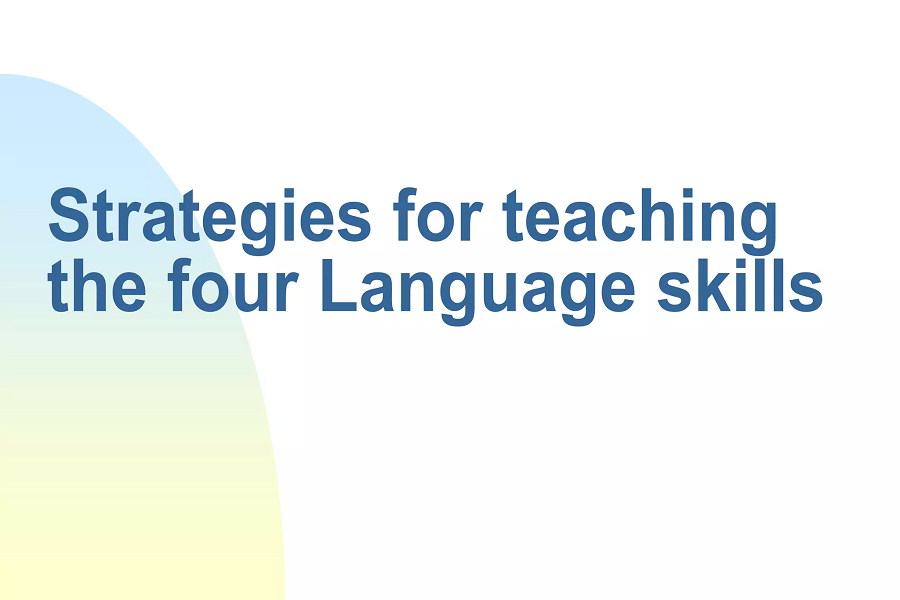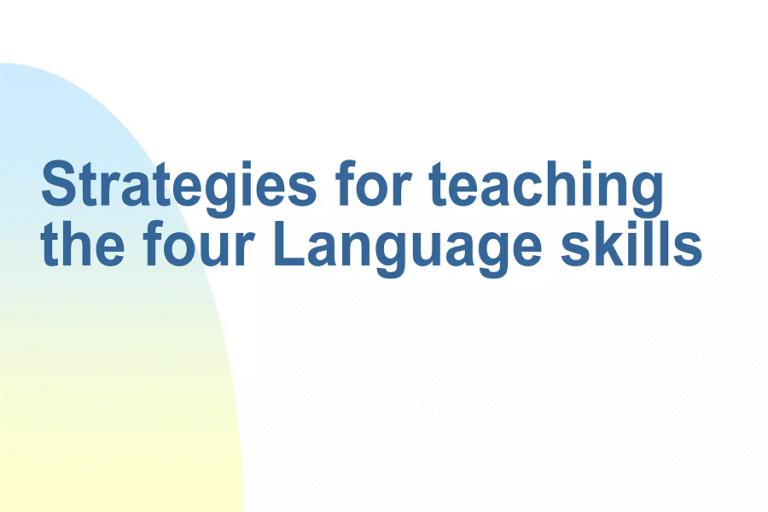
Every English teacher knows that true language mastery means more than grammar drills or vocabulary lists. To help learners communicate effectively, we must guide them in developing the four core language skills: Listening, Speaking, Reading, and Writing.
However, balancing all four skills in a lesson — and teaching them in a way that feels connected and purposeful — can be challenging. That’s why I created my Comprehensive Guide to Teaching the Four Language Skills, designed to help teachers plan effective, engaging, and integrated lessons.
In this article, I’ll share practical insights and strategies from the guide to help you transform your classroom into a dynamic, skill-balanced environment.
Teaching Listening: Build Understanding Before Fluency
Listening is the foundation of communication, yet it’s often the most neglected skill. To teach it effectively:
* Use authentic materials like podcasts, interviews, or news clips.
* Pre-teach key vocabulary and set clear listening purposes.
* Encourage bottom-up listening (sound and word recognition) and top-down listening (predicting meaning through context).
Follow up with comprehension questions and short discussions to help learners process what they’ve heard.
Tip: Don’t treat listening as a test — treat it as practice. Give students multiple chances to listen, pause, and discuss.
Teaching Speaking: Create Real Communication Opportunities
Speaking activities shouldn’t just rehearse grammar; they should encourage meaningful interaction.
Try these techniques:
* Use pair and group work to maximize talk time.
* Integrate role-plays, problem-solving tasks, and debates.
* Focus on fluency first, then refine accuracy through feedback.
* Use visual prompts, short videos, or real-life situations to make speaking purposeful.
Pro tip: Record student conversations occasionally and let them reflect on their progress — it’s powerful for self-awareness and motivation. It also helps them overcome their fear of speaking.
Teaching Reading: Move Beyond Comprehension Questions
Reading is more than understanding words on a page; it’s about building strategies for lifelong learning.
Here’s how to boost reading lessons:
* Pre-reading: Activate students’ background knowledge and predict the topic.
* While-reading: Encourage skimming, scanning, and inferencing.
* Post-reading: Extend learning through summaries, discussions, or vocabulary logs.
Try this: Integrate reading into project work — students read for a purpose, not just for a grade.
Teaching Writing: Guide the Process, Not Just the Product
Writing lessons often focus too much on correction and too little on creativity. Instead, adopt a process approach:
* Brainstorm ideas before writing.
* Organize thoughts using mind maps or outlines.
* Write drafts, focusing on ideas before language perfection.
* Edit and revise collaboratively to build ownership.
Encourage reflection: Ask learners to compare their first and final drafts — seeing improvement boosts confidence.
Integrating the Four Skills
The most effective lessons combine skills naturally. For example:
* Listen to a podcast (Listening) → discuss it (Speaking) → read a related article (Reading) → write a summary or opinion (Writing).
This integrated skills approach mirrors real-life communication and reinforces learning across all areas.
Ready to Teach with Confidence?
If you’ve found these tips helpful, you’ll love my Comprehensive Guide to Teaching the Four Language Skills — a detailed, ready-to-use resource that:
- Breaks down each skill with research-based strategies
- Includes sample lesson plans and classroom activities
- Offers practical assessment ideas
- Helps you create balanced, engaging lessons effortlessly
Whether you’re a new teacher or a seasoned educator looking for inspiration, this guide will give you everything you need to help your students listen, speak, read, and write with confidence.
Get your copy today and take your English teaching to the next level!
Download the Guide Here





